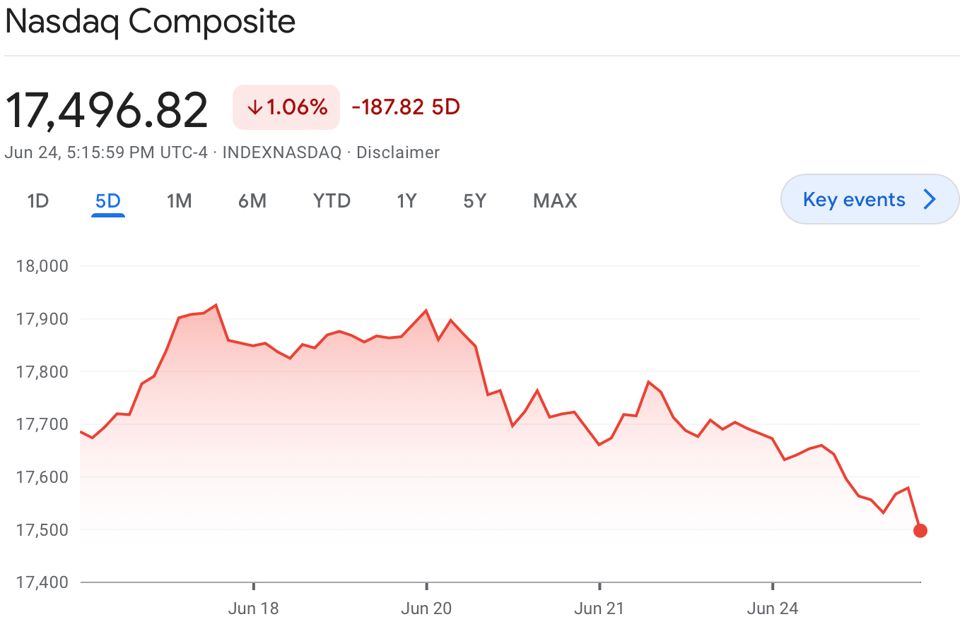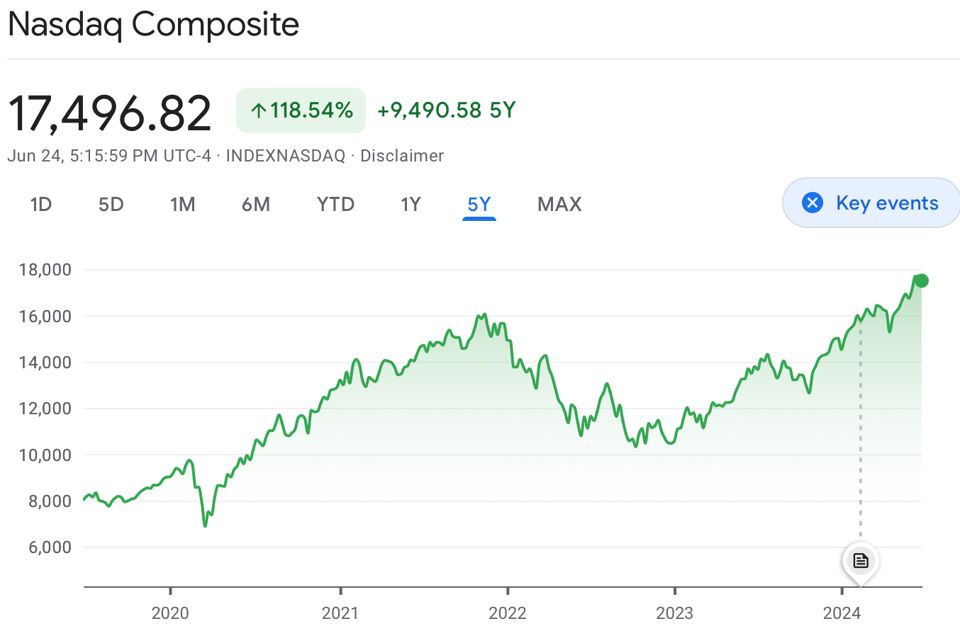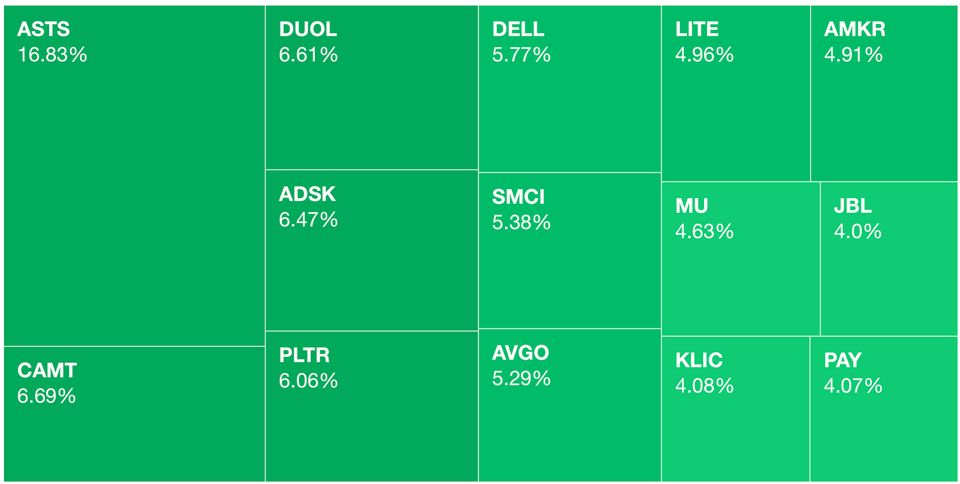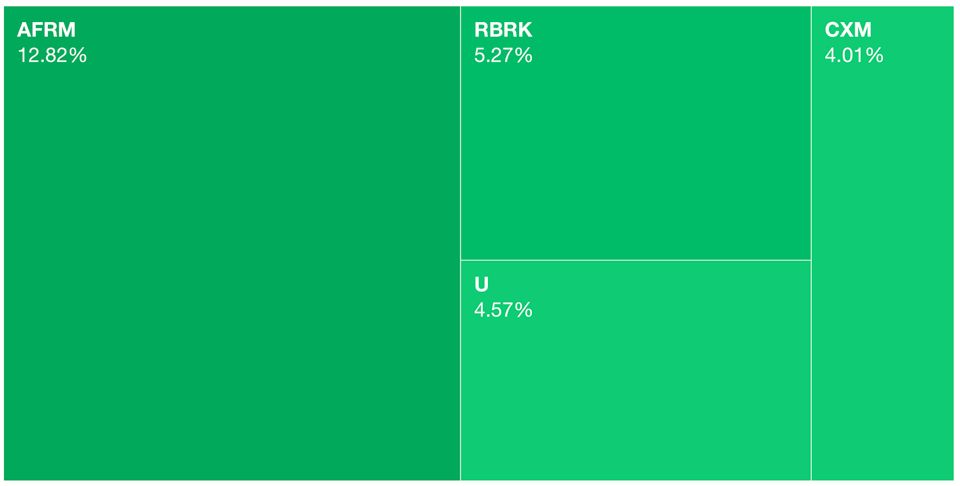Markets Monday for 2024-06-24
Tech market analysis with Siri, Yahoo Finance heat maps, and filtering tips for better stock screener results.
Markets Monday for 2024-06-24
Analyzing the past and future of the tech market in Markets Monday.
Last week
Looking at the week behind for the tech market.
I typically ask Siri how NASDAQ is doing and wait to hear it if is a big change or not. Siri logic on the definition of what to say if the there is +/- < 1% seems to be varied by day of attempts. More experimentation or going deeper into how Siri makes word choices will be interesting as the new Apple WWDC stories of Siri evolve over the year.
Previously, I mentioned adding a 5 day view contrasted with a 5 year view.


And so, “this seems to be going up for now”, is still true on a long enough timeline.
This week
Looking at the week ahead for the tech market.
Previously, I decided on a view from Yahoo Finance. For example, this was a view of intraday in Technology which usually gets around a dozen or so interesting companies.

And… the winners list narrowed from a dozen to… five.

If you are using Yahoo Applied Filters for Stocks screener you can bookmark your own heat map view.
% Change in Price (Intraday):greater than 4
Region: United States
Market Cap (Intraday): Mid Cap and Large Cap and Mega Cap
Price (Intraday):greater than or equal 5
Volume:greater than 15000
Sector: Technology
Industry: Software—Infrastructure and Information Technology Services and Computer Hardware and Software—Application and Communication Equipment and Electronics & Computer Distribution and Consumer Electronics and Electronic Components and Scientific & Technical Instruments and Semiconductor Equipment & Materials and Semiconductors
I didn’t have any podcasts or other recorded insights but I did find a few updates on Mastodon and LinkedIn. One link shows the importance of breaking up the few into the many. One link shows, well, not that.
https://flipboard.social/@mike/112667198095180306